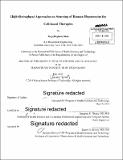| dc.description.abstract | Chronic liver disease affects more than 500 million people worldwide. The only therapy shown to directly prevent mortality is organ transplantation. However, there is growing discrepancy between supply and demand of transplant-grade organs and transplant recipients are subject to a lifetime of immunosuppressive regimens. Therefore, the overall aim of this thesis is to advance alternatives to whole organ transplantation for liver diseases. Treating the failure of organs serving a multitude of biochemical functions, such as the liver, requires cell-based therapies. Such therapies should ideally employ human cells due to immunological concerns and the substantial differences between animal and human hepatocellular functions. Human cell lines, while renewable, lack the full functional capacity of primary adult hepatocytes, and for clinical applications there is a tumorigenic risk. Primary human hepatocytes have exhibited therapeutic potential; however, limited sourcing has been a bottleneck for many fields of research and clinical therapies. Pluripotent human stem cells are an attractive cell source, but to date, the hepatocyte-like cells obtain by directed differentiation continue to exhibit an immature hepatic phenotype, which resembles fetal hepatocytes more than adult hepatocytes. Motivated by these limitations, we report in the first section of this thesis, the development of a 384-well liver platform that incorporates cell-cell interactions to stabilize the hepatocyte phenotype, and enable high-throughput screening using cryopreserved primary human hepatocytes. We also developed attendant assays to assess cell fates in this platform through an automated image-based proliferation assay and an ELISA-based functional assay. In the second section of this thesis, we use the high-throughput liver platform to conduct a chemical screen of 12,480 small molecules. We identified 12 bioactive factors in three classes: small molecules that enhanced proliferation (PH), or function (FH) or both proliferation and function (FPH) of human primmary hepatocytes. 2 FPHs expanded primary human hepatocytes in vitro, resulting in up to 10 fold more cells over 7 days. This proliferation rate is consistent with in vivo liver regeneration kinetics and similar to PGE2-induced Wnt-mediated human hepatocyte proliferation in vitro. To date, we have tested 10 different donors of primary human hepatocytes and found all to expand upon FPH treatment, though kinetics and degrees of response vary. Additionally, FPH1 and FHl were shown to differentiate hepatocyte-like cells derived from induced pluripotent stem cells (iPS) toward a phenotype more mature than what was previously obtainable, causing upregulation of previously low or absent adult markers such as CYP3A4, CYP2A6, PXR and BSEP, concomitant with downregulation of persistent fetal marker AFP. In the final section of this thesis, we explore the therapeutic potential of identified small molecules in vivo. Using zebrafish models from the Goessling/North lab, we observed that both PHIl and FHl enhanced liver sizes in lfabp:GFP reporter zebrafish embryos. In another model of acute liver failure induced by overdose of acetaminophen (APAP), PH1 and FHl acted as hepatoprotectants that increased liver size, and in the case of FHi, rescued zebrafish survival. At sub-lethal concentrations (5mM APAP), the respective therapeutic windows of FHl and PHI both exceed that of N-acetylcystein, the only antidote in use clinically, by at least 12 hours. At lethal concentrations (IOmM APAP), FHl therapy further improved zebrafish survival by up to 63% in both embryonic and adult models of APAP toxicity. The high-throughput liver platform developed in this thesis will enable studies of previously inaccessible aspects of liver biology and small-molecule bioactivity, and have led to the identification of first generation small molecules that have the potential to address cell sourcing challenge impacting many facets of liver disease. | en_US |
